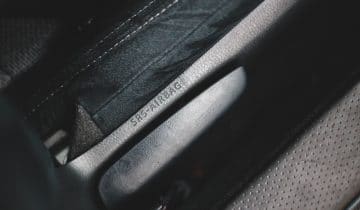Road accidents are quite unfortunate and when these happen, you want to ensure that your car’s safety components are working perfectly. This means that your seatbelts can provide you with the proper restraint you need in the event that you bump into a collision.
Unfortunately, your seatbelt may have difficulty retracting or pulling out during these times, causing slacks of webbing to the pool. Even the most minor issue can compromise your protection on the road. When this happens, it’s best to call safety restoration experts to ensure that your car’s safety components are working properly.
That’s why if you need to fix your seatbelt right away, don’t worry, we’re here to help! In this guide, we’ll share with you how to repair webbing twists to help your seatbelt pull out and retract normally. Let’s take a look!
Understanding Your Seatbelt
Before you do any repairs and investigate the problem, it’s best to familiarize yourself with the different parts of a seatbelt. When you do this, you’re able to know which parts are faulty and which parts need replacements.
- Buckle: A seatbelt’s buckles are used as a receptacle to restrain your seatbelt’s latch plate into place. When you fasten your seatbelt, you insert the latch plate to the buckle, and you can also manually release it.
- Latch Plate: This component slides up and down your webbing and locks into place when you insert it in the buckle.
- Webbing: This is often called the “belt” by many motorists, and it’s the strap that wraps around you to provide restraint.
- Pillar Loop: This part of the seatbelt is affixed on the motorist’s shoulder and allows the webbing to be pulled or retracted so you can get the proper fit.
- Retractor: One of the most important parts of the seatbelt is the retractor, and it’s responsible for the inward and outward distribution of webbing. This part is meant to lock a seatbelt’s webbing in place when it is yanked abruptly, giving you the much-needed restraint during a collision.
How Do I Fix My Seatbelt’s Webbing?
There are many reasons your seatbelt may malfunction. But two of the most common reasons are webbing twists or a faulty retractor.
When it comes to retractors, you may need to open your seatbelt’s panels and investigate and do necessary repairs. Although you can do this independently, it’s always best to ask professionals to do this for you.
However, if you’re dealing with seatbelt webbing issues, such as twists, here’s a quick guide that could help remedy the issue before you take your car to Safety Restore for inspection.
Step #1: Unbuckle your seat belt and create slack in the unit’s webbing by feeding the seatbelt backward to create an inch by inch retraction.
Step #2: Pull your seatbelt outward until it’s fully extended, and this time, you should clear any twists in your webbing. If you pull and there is resistance during this step, there may be more webbings.
Step #3: As you pull your seatbelt outward, look for more twists in low clearance areas and pay attention to your seatbelt’s pillar loop.
Step #4: If necessary, you may need to remove your panel to investigate even further. However, it’s best to have professionals deal with this for this step, seeing as it’s a safety-sensitive part.
The Bottom Line: Clearing Webbing Twists is Easy, But It’s Still Best Done by Professionals
When you’re repairing your seatbelt, some issues can be done by yourself, such as unlooping your webbings. However, even if they’re relatively easy, it’s always better to let safety restoration services take the lead when it comes to seat belt strap replacement and repairs to ensure your safety.
Why Choose Safety Restore?
When it comes to dealing with seatbelt strap replacements, seat belt repairs, webbing replacements, and more, it’s best to call Safety Restore.
We are the leading safety restoration company that specializes in seatbelt repairs and airbag modules. Learn more about how we can help you today!

